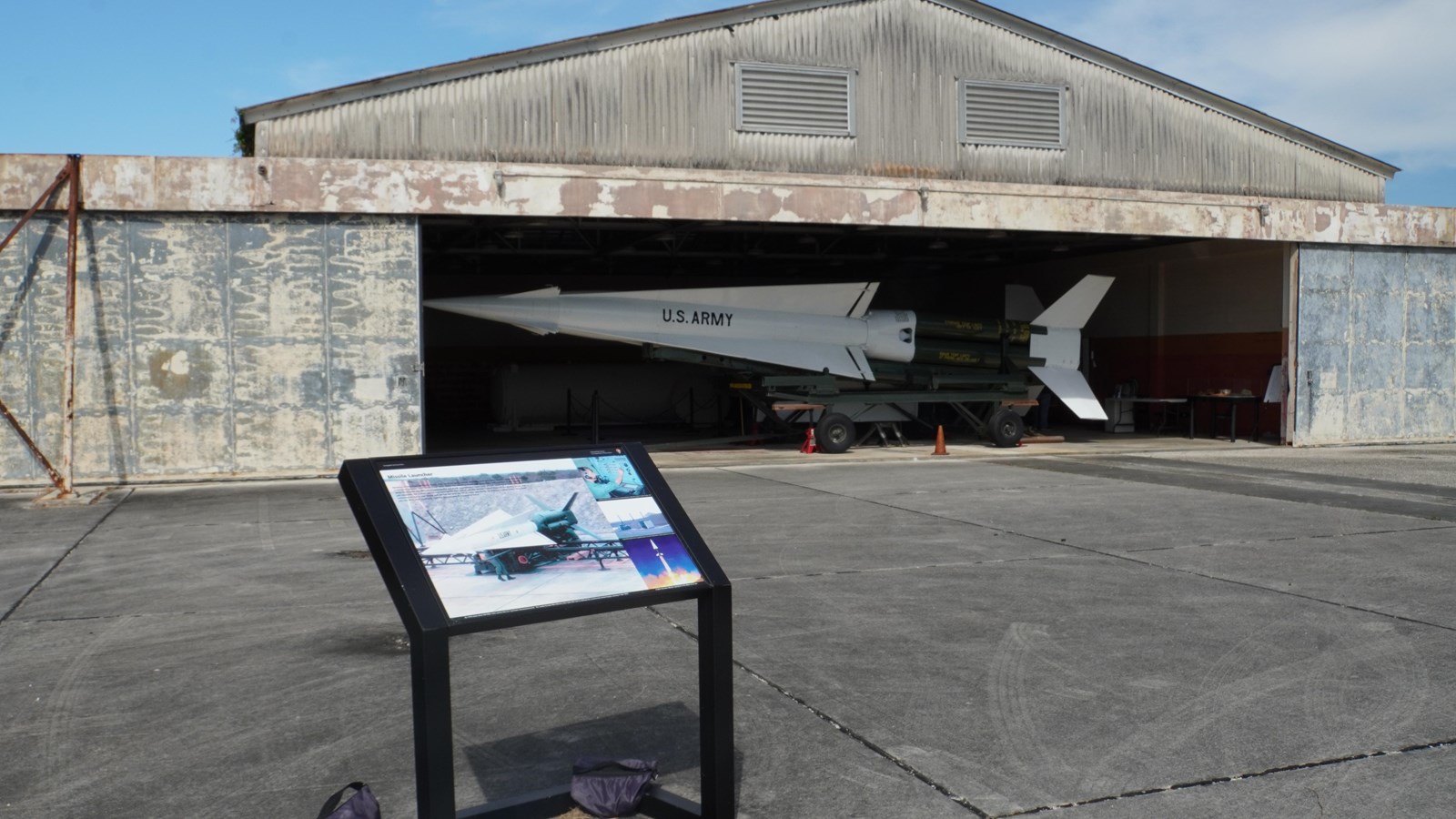Last updated: March 23, 2021
Place
HM-69 Missile Barn C

NPS Photo/ K Zylland
Section Barn C, one of the three barns that held the missiles and protected them when they were not deployed to be tested or fired. The large paved area between the road and the barn had three launch pads with rails between so two soldiers could roll out the five ton missiles to their positions. At Nike bases elsewhere in the country, the missiles would be housed below the launch pads and elevators brought the missiles up; here the water table is too close to the surface to have underground facilities, so the barns were built.
Maintenance and cleaning had to be kept to perfection here. If there was so much as a pebble in the rails, the missiles might not be able to be readied quickly enough to destroy incoming aircraft from Cuba. Security was at its tightest, as shown by many of the warnings on the inside walls. Crews had to call security within 60 seconds of entering the barn. As you explore, note that the displays added by the Park Service are on tables and easels. Everything on the walls of the barn is exactly as it was left when the site was decommissioned in 1979.The missile on display is a real Nike Hercules missile, though it no longer has its nuclear warhead. It was restored in 2012 by students at George T. Baker Aviation School in Miami, 50 years after the Cuban Missile Crisis.
Maintenance and cleaning had to be kept to perfection here. If there was so much as a pebble in the rails, the missiles might not be able to be readied quickly enough to destroy incoming aircraft from Cuba. Security was at its tightest, as shown by many of the warnings on the inside walls. Crews had to call security within 60 seconds of entering the barn. As you explore, note that the displays added by the Park Service are on tables and easels. Everything on the walls of the barn is exactly as it was left when the site was decommissioned in 1979.The missile on display is a real Nike Hercules missile, though it no longer has its nuclear warhead. It was restored in 2012 by students at George T. Baker Aviation School in Miami, 50 years after the Cuban Missile Crisis.
